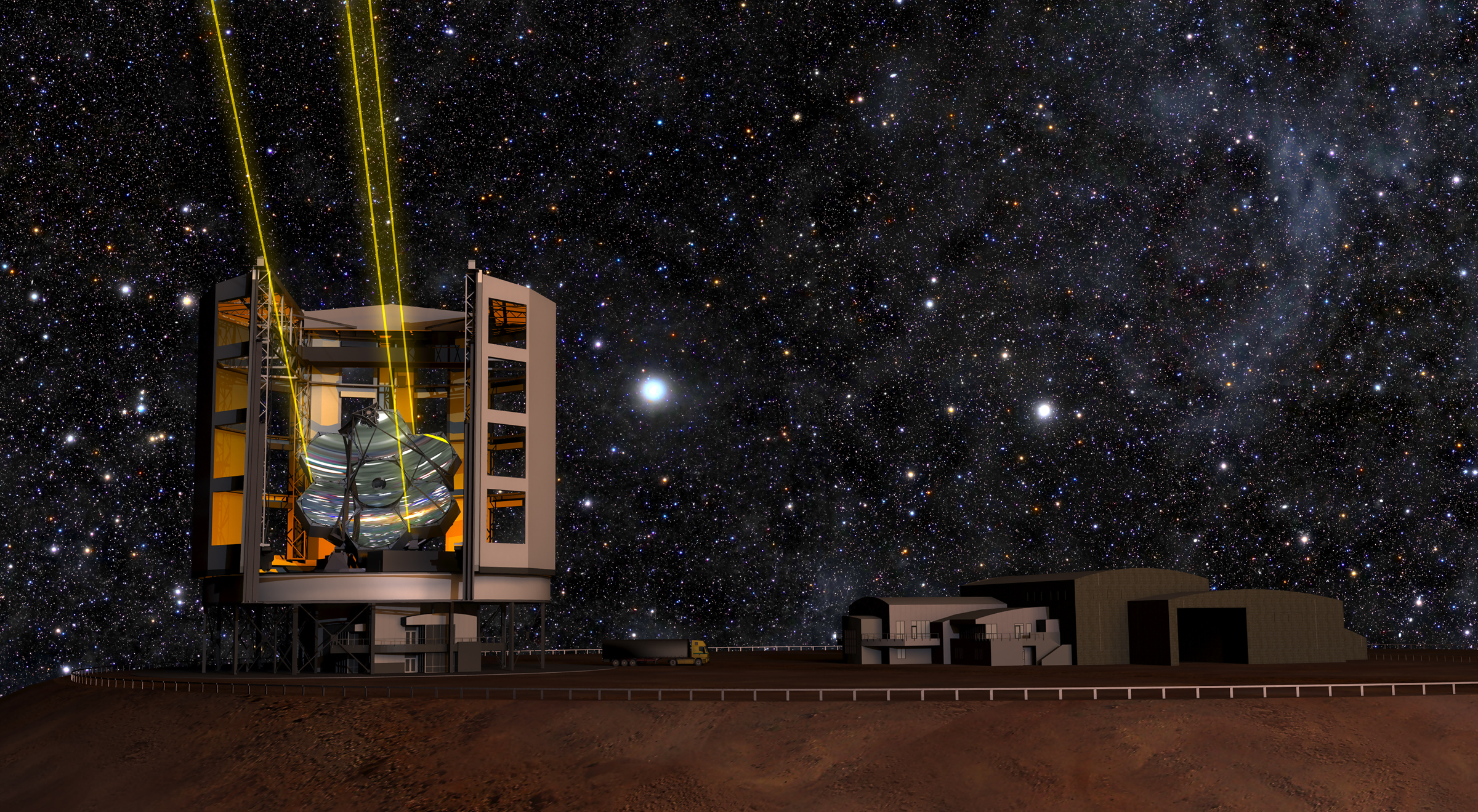Construction of Giant Telescope Begins With Explosion Today: Watch Live

UPDATE: See the big blast in our wrap up article here: Giant Telescope's Construction Starts with a Bang ... Literally
Scientists will detonate a "Big Bang" explosion on a Chile mountaintop today to start construction on a major new telescope and Internet denizens around the world can watch the action live online.
Backers of the Giant Magellan Telescope, a huge 82-foot (24.5-meter) observatory that promises to outdo the Hubble Space Telescope several times over, will broadcast the first excavation blast from a mountain in Chile's high Atacama Desert live at 12 p.m. EDT (1600 GMT).
"On Friday, March 23, the First Blast (Big Bang Event) is scheduled to occur at Las Campanas Peak in Chile, at high noon US Eastern Daylight Time," telescope project officials said in an announcement. "This marks the beginning of leveling and site preparation prior to construction of the Giant Magellan Telescope."
The webcast will be available at: https://statedept.connectsolutions.com/chile
Viewers must "Enter as a Guest" and type a name to login in order to view the blast, project officials said.
The Giant Magellan Telescope is one of several huge ground-based telescopes currently under way at various locations around the world. The project aims to build a $700 million telescope made up of six circular mirrors, each 28 feet (8.4 meters) across, which can be adjusted to eliminate the blurring effects of Earth's atmosphere.
Get the Space.com Newsletter
Breaking space news, the latest updates on rocket launches, skywatching events and more!
The telescope is being built by 10 different university and organizations spread across Australia, South Korea and the United States. It is expected to be completed in 2018.

The Giant Magellan Telescope won't be the world's largest telescope (the planned 138-foot (42-meter) European Extremely Large Telescope has that honor and also begins construction this year), but it should have 10 times the resolution of the Hubble Space Telescope, project officials said.
Researchers hope the new telescope will be able to shed new light on how the first galaxies formed, the true nature of dark matter and dark energy, and other ongoing astronomical mysteries.
The new telescope's location at an altitude of 8,500 feet (2,550 meters) up in Chile's Atacama Desert is also an optimum base for deep-sky surveys. The region can have dark, clear skies 300 nights a year and is currently home to many telescopes operated by the European Southern Observatory. The desert is also the future home of the European Extremely Large Telescope.
You can follow SPACE.com Managing Editor Tariq Malik on Twitter @tariqjmalik. Follow SPACE.com for the latest in space science and exploration news on Twitter @Spacedotcom and on Facebook.
Join our Space Forums to keep talking space on the latest missions, night sky and more! And if you have a news tip, correction or comment, let us know at: community@space.com.

Tariq is the Editor-in-Chief of Space.com and joined the team in 2001, first as an intern and staff writer, and later as an editor. He covers human spaceflight, exploration and space science, as well as skywatching and entertainment. He became Space.com's Managing Editor in 2009 and Editor-in-Chief in 2019. Before joining Space.com, Tariq was a staff reporter for The Los Angeles Times covering education and city beats in La Habra, Fullerton and Huntington Beach. In October 2022, Tariq received the Harry Kolcum Award for excellence in space reporting from the National Space Club Florida Committee. He is also an Eagle Scout (yes, he has the Space Exploration merit badge) and went to Space Camp four times as a kid and a fifth time as an adult. He has journalism degrees from the University of Southern California and New York University. You can find Tariq at Space.com and as the co-host to the This Week In Space podcast with space historian Rod Pyle on the TWiT network. To see his latest project, you can follow Tariq on Twitter @tariqjmalik.









